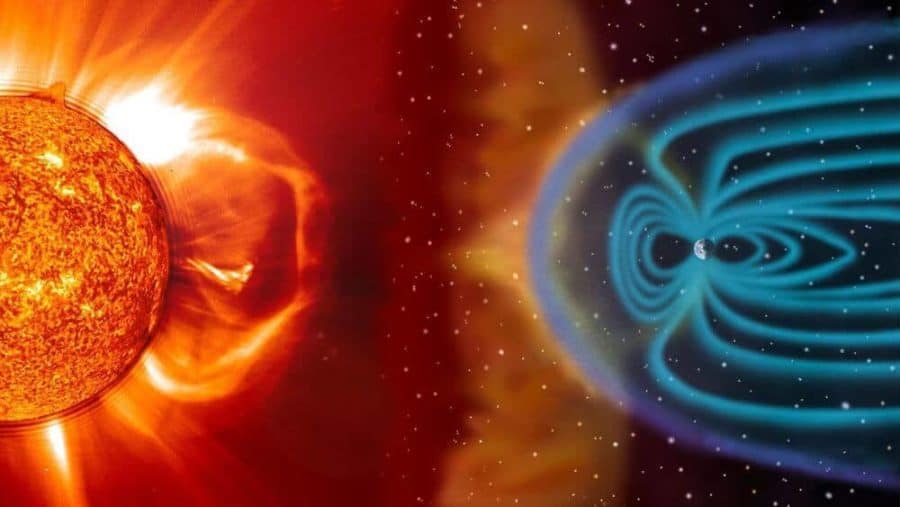Extreme space weather has a global footprint and the potential to damage critical infrastructure on the ground and in space. A new report from the European Commission’s Joint Research Centre (JRC) calls for bridging knowledge gaps and for better coordination at EU level to reduce the potential impact of space weather events.
The sun shapes the space environment around the Earth. This so-called space weather can affect space assets but also critical infrastructure on the ground, potentially causing service disruptions or infrastructure failures. Numerous space weather events affecting the power grid, aviation, communication, and navigation systems have already been documented.
The impact of severe space weather can cross national borders, which means that a crisis in one country can affect the infrastructure in the neighbouring countries. This raises concerns due to the increasing reliance of society on the services that these infrastructures provide.
New report identifies knowledge gaps
The JRC has investigated the impacts of space weather on critical infrastructure in the EU. A new report identifies the gaps in reducing risks linked to space weather and makes recommendations for policy, industry and science on how to close these gaps.
The report summarises the results of a summit organised in partnership with the Swedish Civil Contingencies Agency and the UK Met Office, with the support of the US National Oceanic and Atmospheric Administration (NOAA) in November 2016. Representatives from European infrastructure operators, insurance, academia, ESA, and European and US government agencies attended the event.
Interdependencies and crisis response
The potential failure of critical infrastructures during extreme space weather can lead to cascading effects impacting other sectors.
New methodologies and tools, as well as a multi-risk governance approach are needed to assess these interdependencies and to enable the coordination of the many different actors that often manage risks in isolation from one other.
A pan-European vulnerability assessment of the power grid should be carried out to identify critical issues and transboundary effects in case of extreme space weather. Infrastructure operators should also assess whether their systems could be indirectly vulnerable to space weather, for instance due to dependencies on timing and positioning information provided by the Global Navigation Satellite System (GNSS).
Better communication between science and industry is also needed to provide relevant and reliable information to operators for decision making.
Space weather forecasting
Early warning and preparedness are essential for limiting the effects of space-weather impacts.
In Europe and the USA, 24/7 space-weather forecasting capabilities are available to support the early warning of government and industry. However, it is important that the consistency of forecasts from different service providers are ensured.
There is a need to enhance forecasting capabilities for regional or local forecasts on the severity and duration of extreme space weather to ensure appropriate response from local operators.
Currently, geomagnetic storm forecasting is hampered by the limited understanding of the magnetic field orientation of Coronal Mass Ejections (CME) before they hit the Earth, and there are still significant knowledge gaps in physical and impact modelling, which affect the early-warning capabilities and preparedness in industry.
The role of the EU
In the EU, the European Programme on Critical Infrastructure Protection provides a policy background for critical infrastructure protection, while the EU disaster risk management policy covers prevention, preparedness and response for all types of disasters.
The Union Civil Protection Mechanism requires EU Member States to prepare a national risk assessment and list the priority risks they are facing. Six countries have included space weather in their risk assessment.
The participants of the summit indicated that there is a need for for improving coordination between the different space weather actors and recommended the establishment of a strategic European decision-making capability to coordinate space-weather risk mitigation and response at pan-European level.
They also advised that the roles and responsibilities of the key players in Europe should be better defined and suggested that coordinated strategic investments for improving the scientific know-how in this area could be explored.
Background
Different types of solar activity can impact the operations of critical infrastructures: Solar flares trigger radio blackouts and affect radar, ground- and space-based communications, as well as the GPS network. Solar radiation storms are a threat to satellite operations, aviation and space flights. Geomagnetic storms, caused by the ejection of magnetised solar plasma which interacts with Earth’s magnetosphere, affect satellite, GPS, aviation, rail transport and power-grid operations.
If our reporting has informed or inspired you, please consider making a donation. Every contribution, no matter the size, empowers us to continue delivering accurate, engaging, and trustworthy science and medical news. Independent journalism requires time, effort, and resources—your support ensures we can keep uncovering the stories that matter most to you.
Join us in making knowledge accessible and impactful. Thank you for standing with us!

